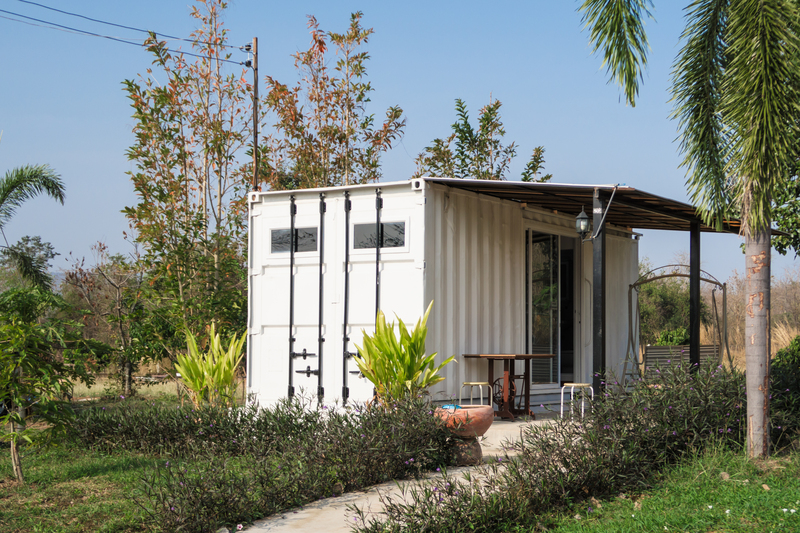Chemical Leaks from Poor Waste Management
Posted on 04/05/2025
Environmental safety has increasingly become a focal point of global discourse. Among the several challenges faced, chemical leaks due to poor waste management emerge as a surging concern. This article delves into the factors resulting in chemical leaks, the associated risks, and the measures necessary to combat this issue.
Introduction to Chemical Leaks and Waste Management
Proper waste management is a vital component of maintaining public health and preserving the environment. However, when waste disposal systems fail or are inadequately managed, they can become significant sources of environmental contamination. Chemical leaks are one of the adverse effects of poor waste management, leading to groundwater contamination, soil degradation, and hazardous air quality.

Causes of Chemical Leaks
Poor Landfill Management
One of the primary causes of chemical leaks is substandard landfill management. Landfills are designed to isolate waste from the environment until it is safe. However, poor maintenance can lead to leachate formation, a liquid that drags harmful chemicals from the waste into the soil and groundwater.
Industrial Waste
Industries produce significant amounts of hazardous waste, including toxic chemicals and heavy metals. Inadequate treatment and improper disposal practices can result in these chemicals seeping into the environment, especially when containment methods are inadequate.
Improper Storage Techniques
Storing chemicals in facilities that are not designed to contain them properly can lead to chemical leaks. Cracked or corroded containers, lack of appropriate protective barriers, and inadequate monitoring systems contribute to the risk.
Illegal Dumping
Illegal dumping of chemical waste is a severe problem. Individuals and companies looking to cut costs often resort to disposing of waste in unauthorized locations. This practice directly exposes the environment to harmful chemicals, creating long-term contamination issues.
Environmental and Health Impacts
Soil and Water Contamination
One of the most immediate consequences of chemical leaks is soil and water contamination. Harmful chemicals can persist in the environment, disrupting ecosystems and making natural resources unsafe for use. Contaminated water sources can impact agriculture, drinking water supplies, and aquatic life.
Air Pollution
Volatile Organic Compounds (VOCs) and other hazardous air pollutants can be released during chemical leaks, affecting air quality. Continuous exposure to these pollutants may lead to respiratory problems, skin irritations, and other serious health issues.
Health Risks to Humans
Exposure to chemicals from leaks can have acute and chronic health consequences. Short-term exposure can cause symptoms ranging from dizziness and headaches to severe reactions like chemical burns. Long-term exposure increases the risk of chronic illnesses such as cancer, reproductive issues, and organ damage.
Preventative Measures and Solutions
Regulatory Compliance
One of the primary steps to prevent chemical leaks is to ensure compliance with stringent regulatory frameworks. Governments need to enforce laws and guidelines that dictate the proper handling, storage, and disposal of hazardous waste. Regular audits and inspections can ensure adherence to these regulations.
Technological Interventions
Advancements in technology provide innovative solutions for better waste management. Automated monitoring systems can detect early signs of chemical leaks, enabling prompt action. Additionally, new methods of chemical neutralization and waste treatment facilities can mitigate potential hazards.
Proper Training and Awareness
Investing in training programs for employees involved in waste management can significantly reduce the risks of chemical leaks. Awareness campaigns on the consequences of poor waste management can also foster community involvement in maintaining environmental safety.
Community Involvement
Public participation is crucial in addressing chemical leak issues. Communities should be educated on recognizing signs of contamination and encouraged to report illegal dumping activities. Collaboration between industries, governments, and the public can lead to more effective waste management practices.

Case Studies
The Love Canal Incident
An infamous example of chemical leaks due to poor waste management is the Love Canal disaster in New York. In the 1970s, buried chemical waste from the Hooker Chemical Company began seeping into residential areas, causing severe health issues and environmental damage. This incident led to the creation of the Comprehensive Environmental Response, Compensation, and Liability Act (CERCLA).
The Bhopal Gas Tragedy
Although not a direct result of waste management, the Bhopal gas leak in India highlights the catastrophic potential of chemical releases. In 1984, a pesticide plant released methyl isocyanate gas, causing thousands of deaths and long-term health consequences for the surviving population. This disaster underscores the critical need for stringent safety protocols in industries handling hazardous materials.
Conclusion
The issue of chemical leaks from poor waste management is a complex problem requiring multi-faceted solutions. It necessitates a commitment to regulatory compliance, advancements in technology, proper training and awareness, and active community involvement. By addressing these key areas, it is possible to mitigate the environmental and health risks associated with chemical leaks, safeguarding both the planet and public health for future generations.
In summary, improving waste management practices is not just an environmental imperative but a necessity for human well-being. It calls for collaborative efforts, an unwavering commitment to safety, and continuous innovation in waste management strategies. Only through these comprehensive measures can we hope to reduce the risks posed by chemical leaks and create a cleaner, safer world.






